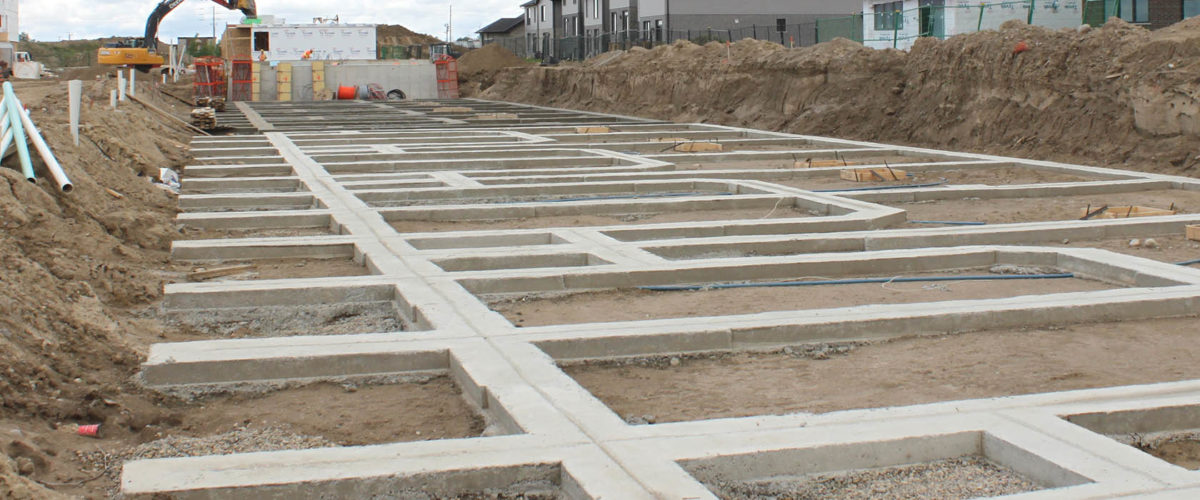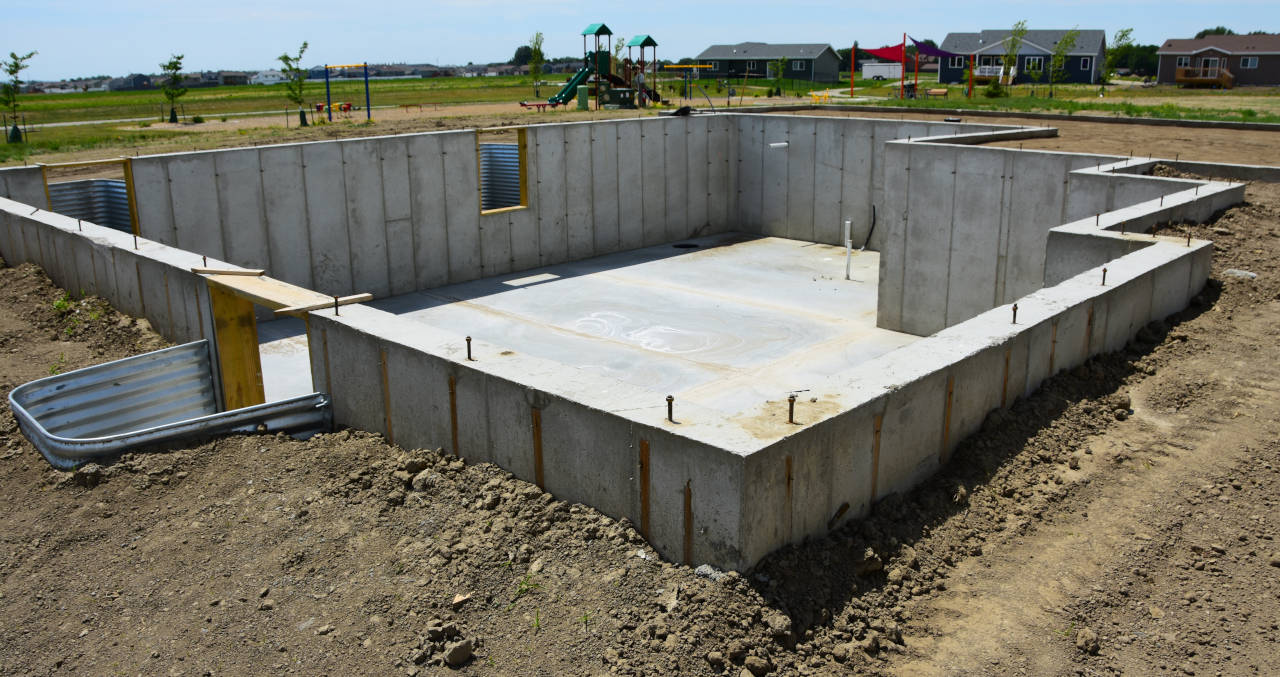What Type Of Foundation Is Good For My Home?
The type of foundation that supports your home has a widespread effect on the durability and comfort of the building. Whether you’re planning to build your own home or want to know more about the house you ‘re living in right now, getting acquainted with the design of the foundation is the perfect place to start.
Three types of foundation are commonly used in modern residential construction:
- Slab
- Space Crawl
- Basement
The type that is right for your home depends largely on the properties of your building site, such as soil type, water table depth, and slope. Beyond that, each type of foundation has pros and cons in terms of affordability, maintenance, home comfort and other factors.
Slab
The Slab foundation is essentially a flat, concrete pad poured on the ground at the home site. Very little preparation is needed to start working on a slab foundation, and the actual installation is very simple. Concrete is formatted into a beam that runs approximately 2 feet deep around the perimeter of the slab foundation, while the remaining portions of the foundation are at most 6 inches thick. The wire mesh and steel reinforcement bars are embedded within the concrete foundation.
Homebuilders recommend using slab foundations in warmer climates, since freezing temperatures can cause the slab to shift in cold climates. When building a home, remember that the sewer pipe is typically put in place prior to the concrete being poured.
There are a number of ways to build a slab foundation:
- Slab on grade – For the construction of this foundation, concrete is simply poured into the prepared soil. It’s poured thicker at the edges to form a base. Rebar is added for strength, and wire mesh may be added to reduce the risk of cracking.
- T-shaped – This foundation consists of concrete bases below the frost line and walls at the top of the base to the surface of the soil. The slab is poured on top of this supporting structure.
- Frost-protected (FPSF) – This foundation contains rigid foam insulation to prevent the ground from freezing below, which reduces the risk of cracking. It is only used for buildings that will be heated in winter.
Pros
No open space underneath the house means less risk of infestation by termites, mice and other pests. Because slab foundations do not rely on support beams, they are exceptionally sturdy. They only require minimal digging, so they’re perfect for rocky or heavy soils where digging a crawl space or a basement would be impractical.
Cons
Water, natural gas, and drainage pipes are often embedded within the concrete, and when these pipes wear out and leak, the foundation will have to be opened so repairs can be made. Slab foundations are vulnerable to pressure caused by freezing and thawing ground, so they’re best used in warmer climates where the ground rarely freezes. Because they can’t protect the house from flood waters the way a crawl space or basement can, they’re less than ideal for flood-prone areas.
Crawlspace
Homes with ramparts are raised about two feet from the floor. Typically, this foundation is built with a cinder block and a brick face. This type of foundation is preferred in humid climates where water is likely to accumulate. Because the house is lifted off the ground, the water that piles up is less likely to be damaged. Crawlspace foundations are also less likely to be infested with termites, although they are prone to mold and fungi build-up due to the empty space environment.
Pros
Crawlspace foundation is a good choice in an area with a high water table or a tendency to flood. Protects the home from shifting soil during heavy rainfall and reduces the risk of floodwater entering the house with flood vents added. The crawl space provides air circulation underneath the house, helping to keep your rooms cooler in the summer. Pipes and other utility lines are often located here, so you can easily find them for repairs or upgrades. You can also use the storage space.
Cons
Crawlspace must be properly insulated and maintained to prevent problems with moisture, mold, cold drafts and pests. Depending on your climate and the design of your home, this could mean adding a vapor barrier and rigid foam insulation in addition to venting or completely encapsulating the space and sealing the vents, and then installing a sump pump and dehumidifier.
Basement
Homes with basements begin with a hole about 8 feet deep and end with a concrete slab. The walls of the basement are usually made up of cinder blocks, and the whole process is done in three parts: first the beams are poured, then the walls, and finally the slab inside the walls.
This process helps to keep the basement foundation waterproof. Houses with basements can also add extra income because they add square footage to the home, providing extra storage space if needed. Another reason why basement foundations are preferred is that they are so durable, with high fire resistance and extreme weather conditions.
Pros
The basement is the perfect place to house appliances related to your utilities, such as your oven and water heater. You will have easy access to these appliances as well as to the pipes and ducts in this area, making it easier to maintain and repair them. The basement also gives you a convenient place to use the washer and dryer to free up space in your main living area.
With a little creativity, you can turn it into a workshop for your hobbies, home theater or even a home bar and a pool room. As an added benefit, the air space that the basement creates under your home helps keep your rooms cooler in the summer.
Cons
Once the basement is built, you will need to seal the air and insulate it to prevent undesired heat loss and gain. In flood-prone areas, you will need to install a pump to remove any flood water that enters the basement. Keeping your basement air sealed, dry and clean properly also helps prevent pest infestations and mold from occurring.



Are You Looking for a Concrete Foundation Specialist You Can Trust?
Spaulding Concrete has been laying concrete foundations throughout the San Francisco Bay Area for over thirty years. We have poured hundreds upon hundreds of foundations for homes, commercial and agricultural properties over the years. The more difficult a project is, the harder we work to provide real solutions and state-of-the-art solutions. We partner with each client from concept to completion, which enables us to design and implement plans that meet or exceed our client’s goals. Our concrete design team is made up of highly skilled, experienced estimators and craftsmen who work diligently to minimize problems and ensure that we remain on schedule. With all the resources available to complete your project through strong connections with leading suppliers, we are a single source for any type of concrete foundations. For all our products and services, we use the latest industry technologies so you can ensure your project will be completed on-time and under code. When it’s time to finish and place, you can count on our highly experienced crews who are skilled in all facets of the industry. Spaulding Concrete will deliver if you need experience with any type of structural concrete. To schedule your free quote, call or contact us today! We are proud to serve Orinda, Lafayette, Moraga, Pleasant Hill, Concord, Martinez, Pittsburg, Antioch, Brentwood and the surrounding areas.
